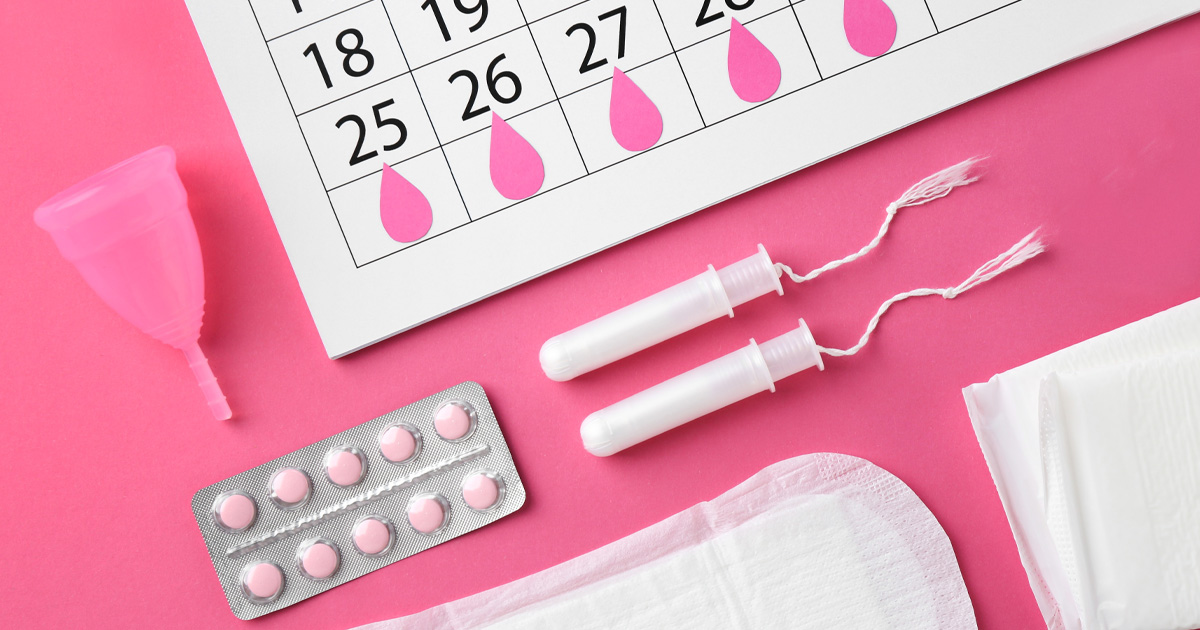
Preventive Care, Self-care
From Acne to Dryness: How Your Hormones Affect Your Skin
If you have ever experienced the dreaded “period breakout” right before your menstrual cycle, then you probably already know that our hormones can have a major impact on our skin. But, did you know that hormones can play a role in our skin’s health throughout our lifetime? The fact is fluctuating hormone levels can cause different skin concerns during your period, pregnancy, and menopause. Knowing what skin changes to expect can help you to properly prepare for and treat them, if needed. First, let’s understand the specific hormones that can impact our skin’s health.
Hormones 101
There are three key hormones that can cause changes to the look and feel of our skin: estrogen, progesterone, and testosterone. Each one plays a very different role.
- Estrogen helps to stimulate collagen, elastin, and hyaluronic acid production that helps the skin to stay plump and firm.
- Progesterone stimulates the production of sebum or the oil glands in the skin. It can cause the skin to swell, and compress the look of pores. Too much of it, however, can lead to oil build up.
- Testosterone, which typically presents during menstruation, works similarly to progesterone by activating the sebaceous glands to produce oil.
Your Period
Did you know that your skin’s appearance can change depending on exactly where you are at in your menstrual cycle? If you are able to track which phase you’re in, you may be able to better predict how your skin will react and use the proper techniques to promote healthy skin.
Day 1-6
During the first few days of your cycle, estrogen, progesterone, and testosterone levels are low. As a result, you may notice your skin looking drier and duller. While the exact cause is unknown, researchers have also found that women tend to report more skin sensitivity during this phase of their cycle. Opting for more hydration in the form of the right moisturizer can keep your skin feeling refreshed. You may also want to avoid any procedures like waxing that could irritate your sensitive skin.
Day 7-11
At this phase, estrogen production is just beginning which can promote healthy cell turnover. To help slough off dead skin cells and reveal the healthy skin cells underneath, use a gentle exfoliant.
Day 12-16
Estrogen reaches it peak at this stage, right before ovulation, which means your skin is going to look its most healthy and glowing! No need to overdo it with products or treatments during this stage.
Day 17-24
During this phase, estrogen levels drop and progesterone reaches its peak. This means you may be more prone to oil build-up and potential breakouts. Using a deep-cleansing mask to draw out impurities can help ward off potential blemishes.
Day 25-28
Right before your period, testosterone production takes over, and can lead to the dreaded period breakout. During this time, opting for a salicylic acid to fully cleanse the pores and kill bacteria may help.
Pregnancy
Your body undergoes many changes during pregnancy, including your skin. During pregnancy, you will experience heightened levels of estrogen and progesterone. These hormones are believed to contribute to the skin condition melasma. This common condition affects 50 to 70 percent of pregnant women.
When melasma occurs during pregnancy it is known as chloasma, and is characterized by dark brownish skin patches that typically pop-up around the forehead, nose, upper lips, or cheeks. Similarly, this hyperpigmentation caused by hormones may also cause existing moles, freckles, or birthmarks to change color. While chloasma and hyperpigmentation can be a cosmetic concern, they will not pose any physical harm to you or your baby.
There is no surefire way to prevent chloasma, but you can reduce flare-ups by limiting sun exposure and protecting your skin by applying a pregnancy-safe sunscreen daily. You can also reduce the appearance of these dark spots by applying concealer or foundation. Typically, these patches will fade within three months post-pregnancy once your hormones resettle.
If any of these skin changes continue after pregnancy, you may want to consult with a dermatologist who can perform a skin check and rule out of any signs of potential skin cancer.
Menopause
During menopause, estrogen levels decrease. When estrogen decreases, so does the production of collagen which can lead to facial volume loss, a decrease in skin thickness, and facial sagging and wrinkles. Research shows that women lose about 30% of collagen during the first five years of menopause. Fortunately, many of these concerns can be addressed with a proper skincare regimen.
To treat collagen loss, some women may opt for taking collagen supplements or eating foods rich collagen (i.e., fish, chicken, egg whites) to help nourish from the inside out. To treat wrinkles, using products with retinol can not only reduce the appearance of fine lines but also help stimulate collagen.
To treat skin dryness during menopause, dermatologists typically recommend trying a more targeted, age-defying moisturizer with ceramides to help lock-in moisture. It’s also recommended to avoid long, hot showers that can dry out the skin.
Another common concern is age spots. Estrogen can protect the skin from UV exposure, so without this added protection, it’s important to apply sunscreen daily.
Bottom line: It’s normal to have good and bad skin days! No matter if you are in your teens or in your 50s, fluctuating hormones can make it challenging to navigate your skin health. By understanding how our hormones can affect us at each stage, we can adjust our routines to prepare for and treat any potential skin woes.
















































